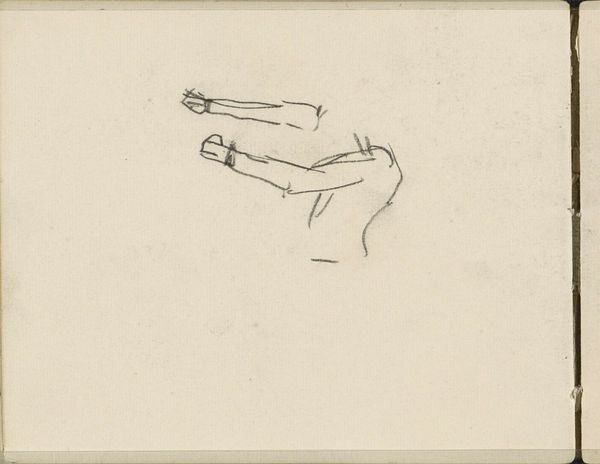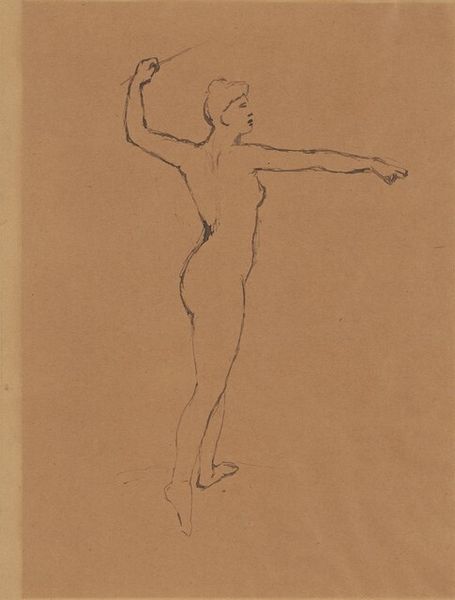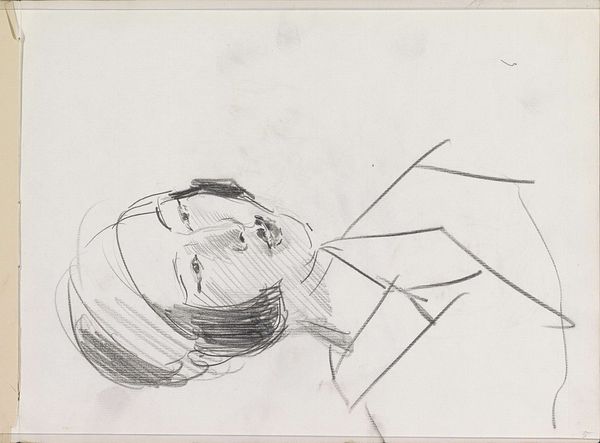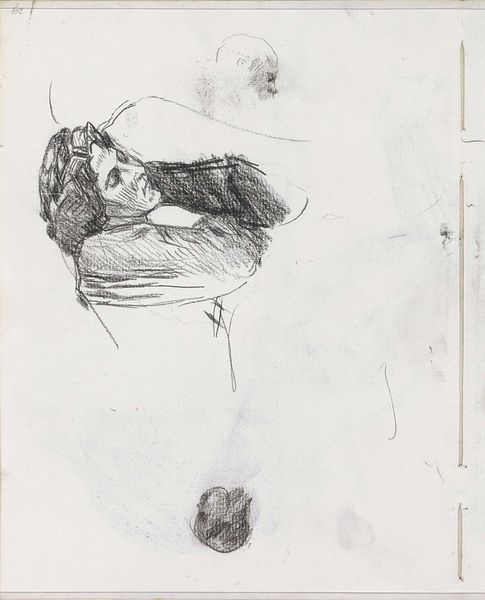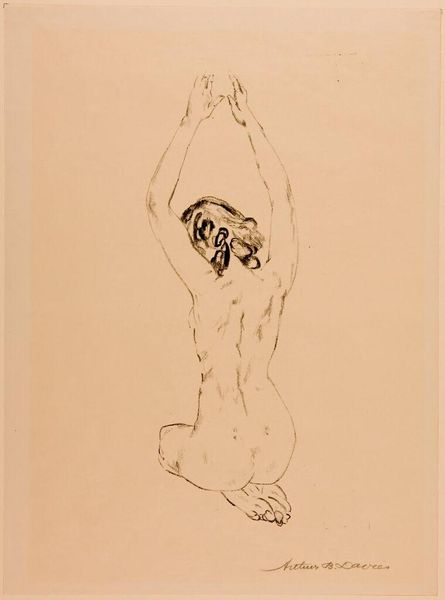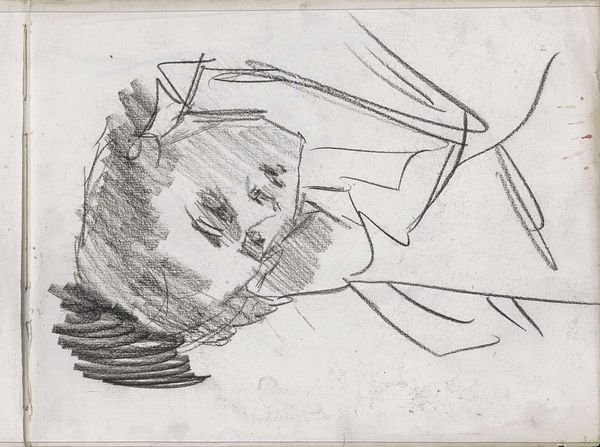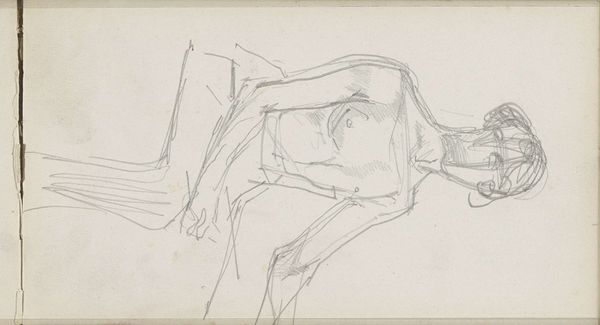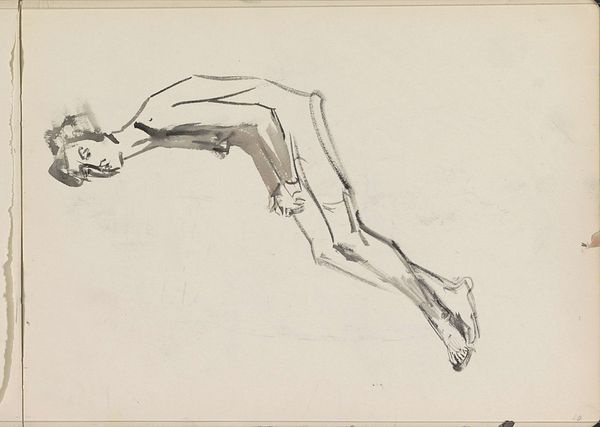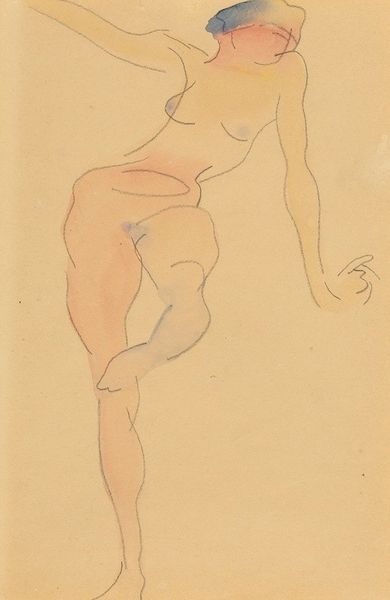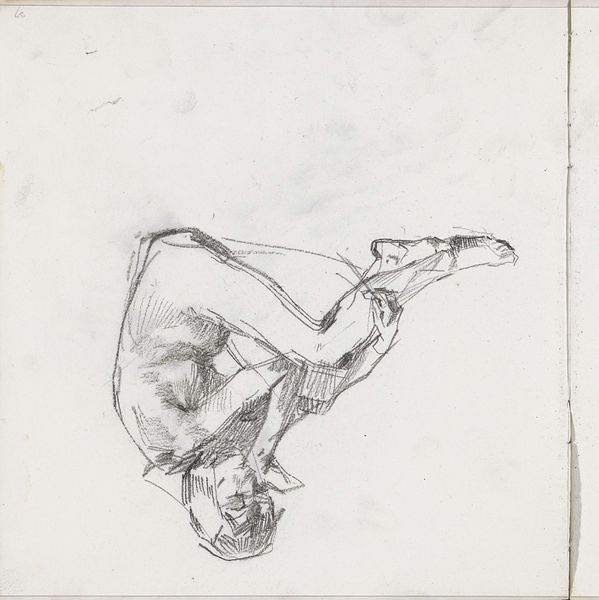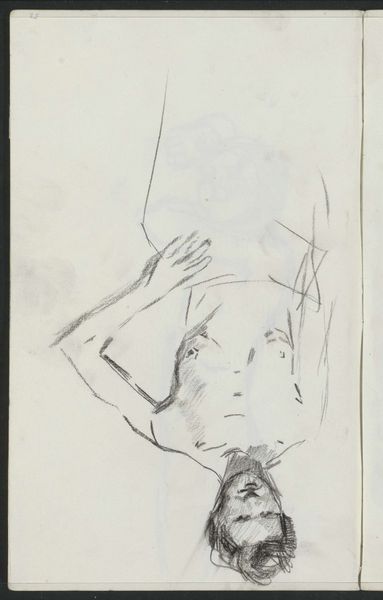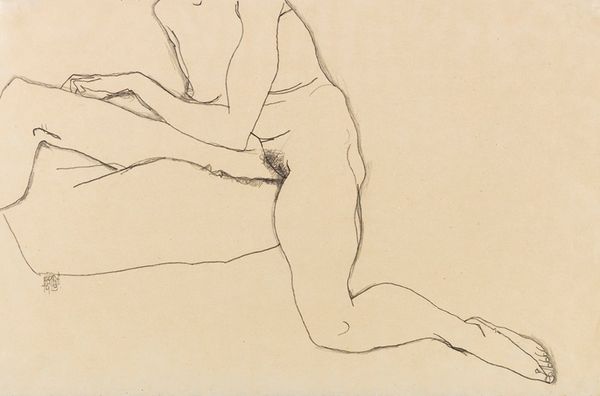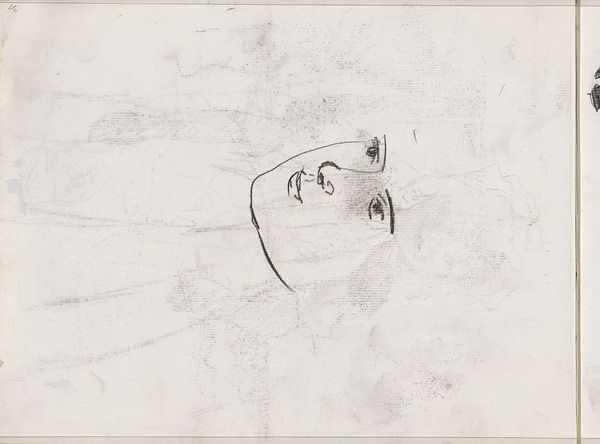
drawing, pencil
#
portrait
#
drawing
#
self-portrait
#
pencil sketch
#
figuration
#
pencil
#
expressionism
#
line
#
portrait drawing
#
nude
Copyright: Public domain
Curator: Here we have Egon Schiele's 1910 drawing, "Clothed Woman, Reclining," a pencil sketch on paper from a private collection. Editor: There’s a fragility to this piece that gets me right away. That outstretched hand, the vulnerable tilt of the head – it feels almost like she’s reaching out for something, or surrendering. Curator: Precisely, and let’s consider Schiele’s methods. The starkness of the pencil, the rawness of the lines – this wasn't just about depicting a reclining figure, it was about using line itself as a tool for emotional expression. The support paper is almost cheap too, its light tan is like discarded butcher's paper from the time. Editor: Definitely! And look at how economical the line work is! It's amazing. It almost looks unfinished, and yet it conveys so much tension. It’s like he’s stripped away everything non-essential to get at the core feeling. Those angular elbows, the jutting shoulder... it all feels so precarious, uncomfortable even. And there's a strange eroticism to the woman with her clothes on. The implied undressing creates tension and intrigue. Curator: And that, I believe, is central to understanding Schiele’s broader project. His frequent use of the nude was never purely for aesthetic reasons. Instead, the body—its textures, its lines, its relationship to clothing and social norms—becomes a vehicle for exploring deeper questions of subjectivity, repression, and societal expectation. Notice how the figure, though “clothed,” reveals more than a simple depiction of drapery ever could. She is almost spilling over her contained boundary in terms of the support medium of paper. Editor: You know, when I look at that hand, it makes me wonder about the conditions under which this drawing was made. I'm imagining Schiele quickly sketching during the late hours... Perhaps he's just as tired as the model and that hand becomes a cry out against his life or something of that sort. It has this strange gestural drama...it seems less like he is drawing than simply capturing his moment in history with whatever tools he has on hand to save some time and energy. Curator: Fascinating how you bring that social urgency to what may seem a quiet drawing. But it makes sense in the larger frame of the Vienna Secession and its artistic revolt. Editor: Yeah, Schiele gives you a way in to his raw emotionality and the emotional temperature of the people around him. Curator: Well, for me it underscores the power of raw materials to evoke an enduring narrative.
Comments
No comments
Be the first to comment and join the conversation on the ultimate creative platform.
